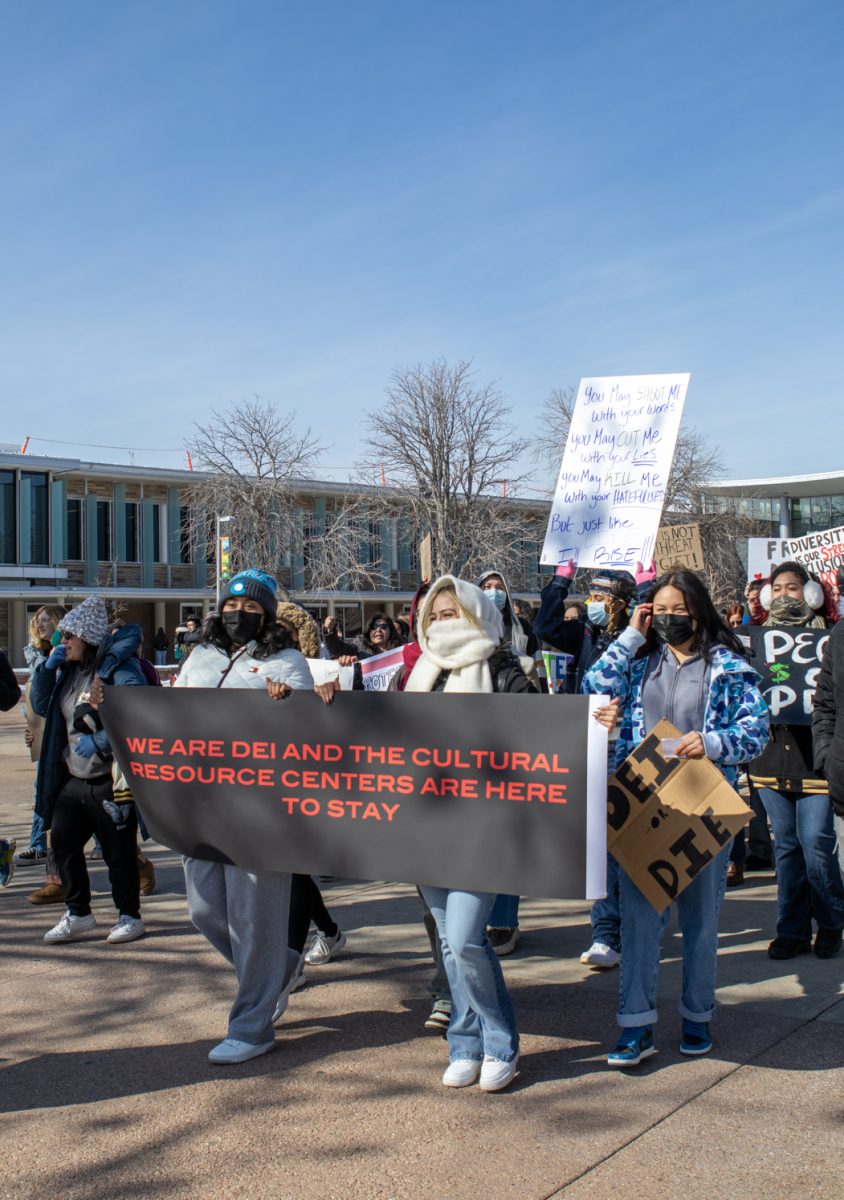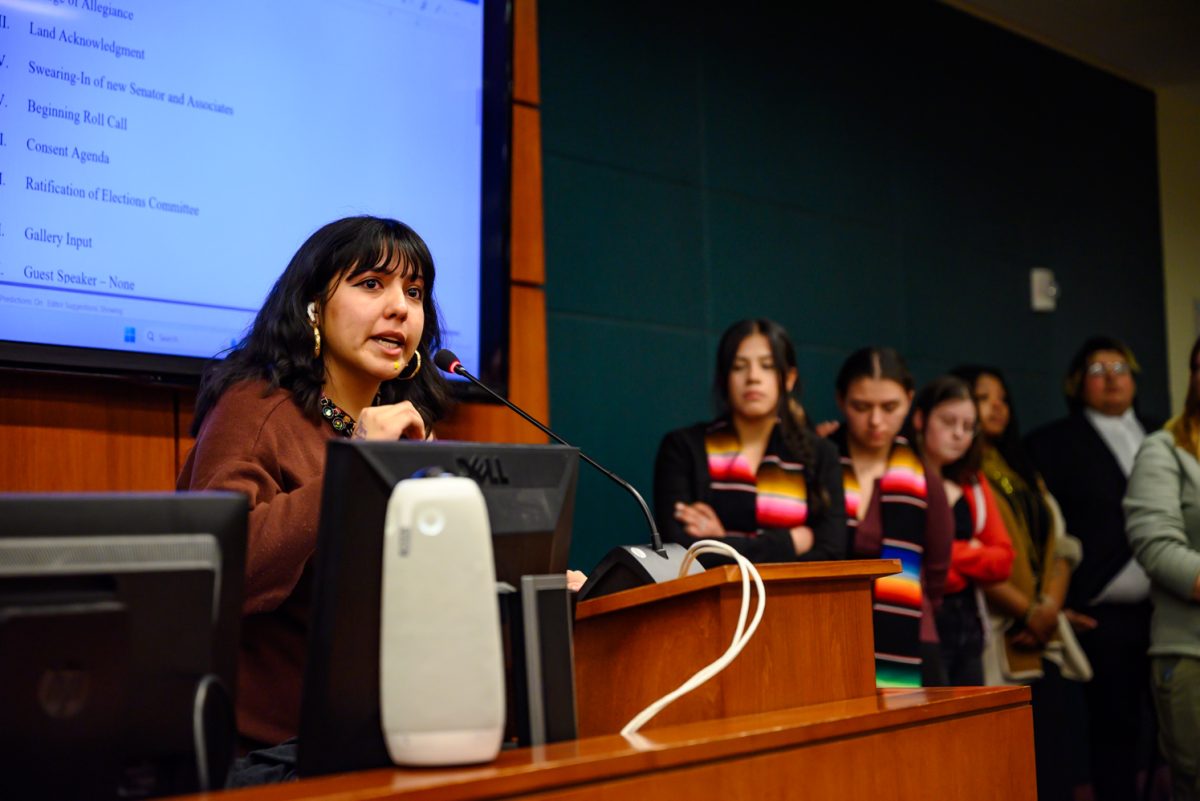On Feb. 14, the acting assistant secretary for civil rights of the U.S. Department of Education issued a letter to colleagues declaring diversity, equity and inclusion measures illegal in federally funded K-12 and higher education institutions.
The following Tuesday, Colorado State University President Amy Parsons sent an email to students and faculty stating that “CSU will begin to adjust to the new federal directives.”
Unlike CSU, some colleges have chosen not to comply with the letter, stating that it is executive overreach from the Trump administration. In a footnote, the letter states that it “does not have the force and effect of law.”
According to Colorado Public Radio News, “CSU Fort Collins is the first college in Colorado to announce several changes in response to directives from the Trump administration to eliminate programs aimed at fostering diversity, equity and inclusion.”
A closer look at the letter provides insight into how the Trump administration intended the directives to function across the board.
CSU political science Professor Courtenay Daum said a dear colleague letter is a common practice in the executive branch for federal departments to clarify how they intend to interpret the law.
“Different administrations utilize dear colleague letters,” Daum said. “The Trump administration is telling people, ‘This is how we intend to interpret the law.’”
However, the letter issued by the department is unique compared to other administrations. Daum said it stands out in three ways: It expands Supreme Court precedent, it threatens to withhold funds already allocated by Congress and it does not clearly define the parameters that are grounds for punishment.
The letter states that Title VI of the Civil Rights Act of 1964 and the Supreme Court case Students for Fair Admissions v. Harvard support the argument that DEI in education is unconstitutional.
“Although SFFA addressed admissions decisions, the Supreme Court’s holding applies more broadly,” the letter reads. “At its core, the test is simple: If an educational institution treats a person of one race differently than it treats another person because of that person’s race, the educational institution violates the law.”
While the Department of Education can use Supreme Court cases to justify its interpretation of the law, typically government departments will stay within the bounds of the case they use. SFFA v. Harvard ruled that higher education cannot use affirmative action in admissions, but the letter argued that DEI is entirely illegal in every educational institution. Importantly, DEI is not mentioned in the case at all.
“I certainly think many schools are not engaging in anticipatory compliance because they think that the content of the letter is legally problematic.” -CSU Professor Courtenay Daum
“The SFFA case versus Harvard talks about one thing, and that is the consideration of race and ethnicity in college admissions decisions,” Daum said. “That’s it. It doesn’t talk about considerations of race and ethnicity or gender in employment. It doesn’t talk about considerations of race or ethnicity or other identities in promotion. It doesn’t talk about student advocacy centers. It doesn’t talk about student affinity groups. It doesn’t talk about curriculum.”
The letter then states that the department will begin to investigate schools 14 days after the issuance of the letter, and schools that are found to have DEI measures will face losing their federal funding.
Daum pointed out that the executive branch has legally withheld funds in the past, like when the Department of Education was allowed to withhold funds from schools when they would not comply with Brown v. Board of Education — the difference being that Congress authorized it first.
“Here, you have executive branch officials who are not lawmakers, who are law executors, saying we’re going to front full federal funds,” Daum said.
Additionally, the directives outlined in the letter are vague, making it difficult to determine which programs may be at risk of losing federal funding. By defining DEI in such broad strokes, it is not clear what the department would consider a violation.
“I mean, it kind of reads like a laundry list of things somebody’s annoyed about,” Daum said.
Daum argued that the directives could face legal challenges once they go into effect due to their broad interpretation and lack of clear legal backing.
“I think a lot of schools feel like, substantively, there are grounds for litigation and procedurally there are grounds for litigation,” Daum said. “Substantively, that the letter is wrong. Procedurally, this isn’t how governing works in the U.S.”
Because the letter is not actual law and has not yet been enforced, legal action has not been taken against it.
Despite the ambiguity surrounding enforcement, CSU has indicated it will comply with the directives. This has led to questions about why the university is taking this approach even though the letter does not yet have legal bearing and will likely be challenged.
Daum speculated that CSU could be preparing to roll back DEI because it is so heavily dependent on federal funding.
“If CSU lost a third of its funding, I mean, it would be like institutional collapse,” Daum said. “But I certainly think many schools are not engaging in anticipatory compliance because they think that the content of the letter is legally problematic.”
While the future of the letter and federal DEI initiatives is uncertain, it is clear that CSU has already been impacted.
“The cost of these types of threats are not born equally and carried equally by all people at the university or in communities,” Daum said. “My inbox today, you know, is full of messages from people across the university and students who are upset, who feel vulnerable, who are worried, and I think in that sense, even if the letter is just a threat and it’s ultimately, like, gutted in the courts, that threat is real and people are feeling that.”
Reach Chloe Waskey at news@collegian.com or on social media @CSUCollegian.













Kyle J Legg • Feb 24, 2025 at 7:09 am
Consideration of race or gender in employment and promotion is racism and sexism. It’s just that simple. Why is that so hard to understand?